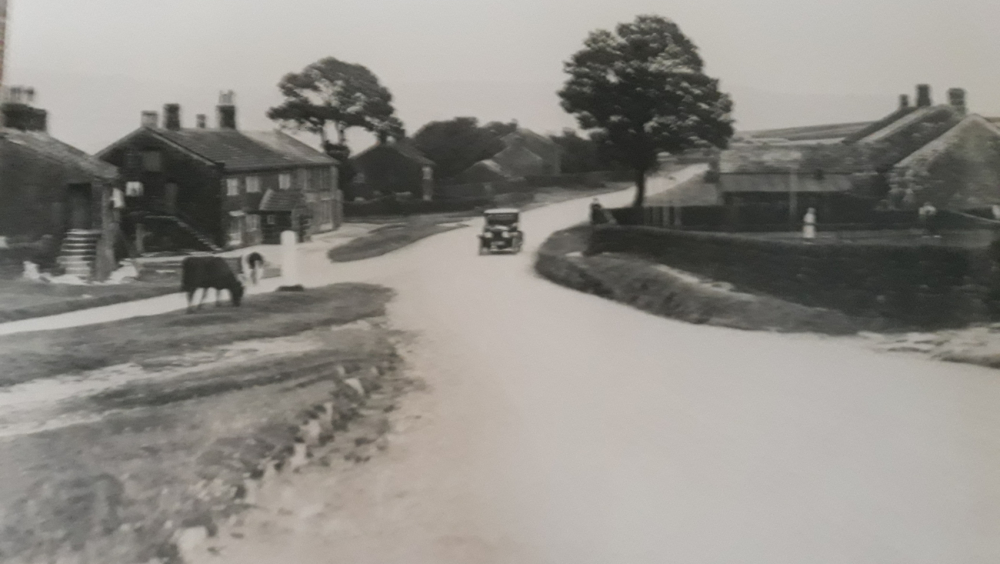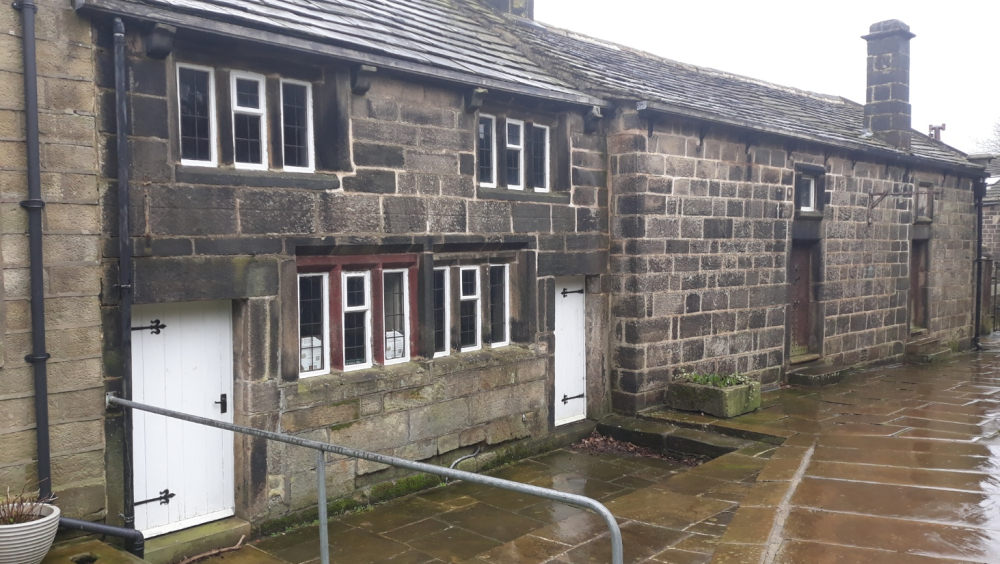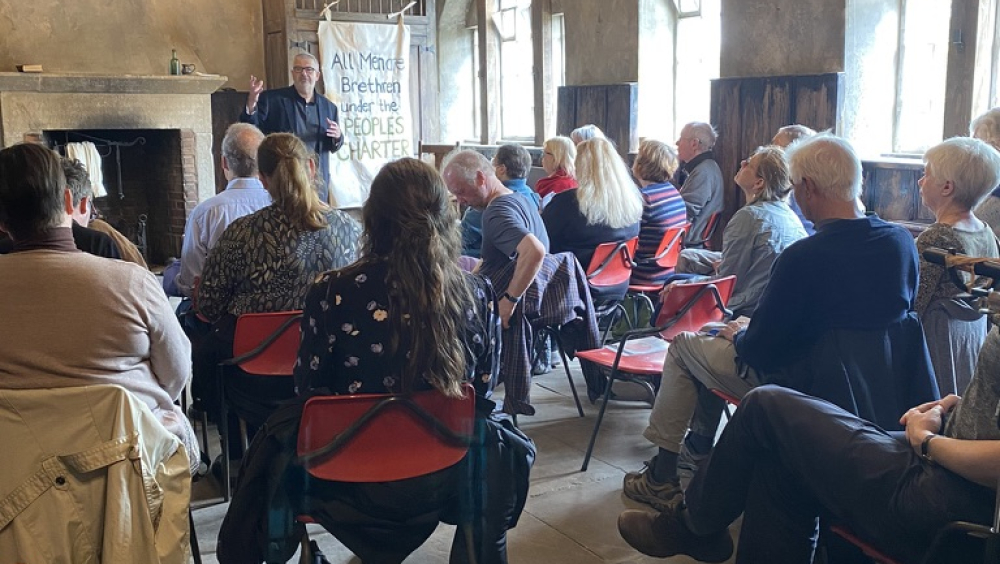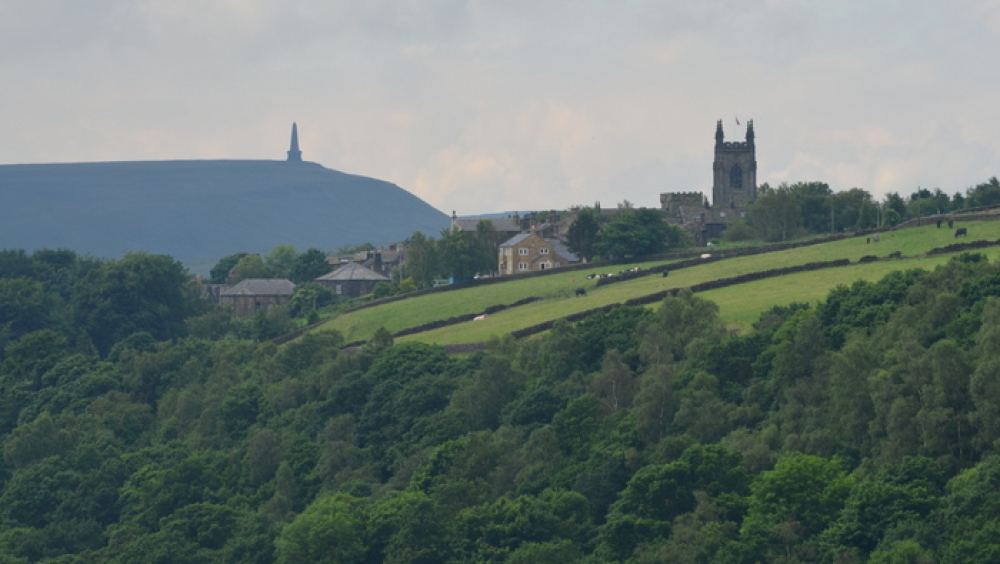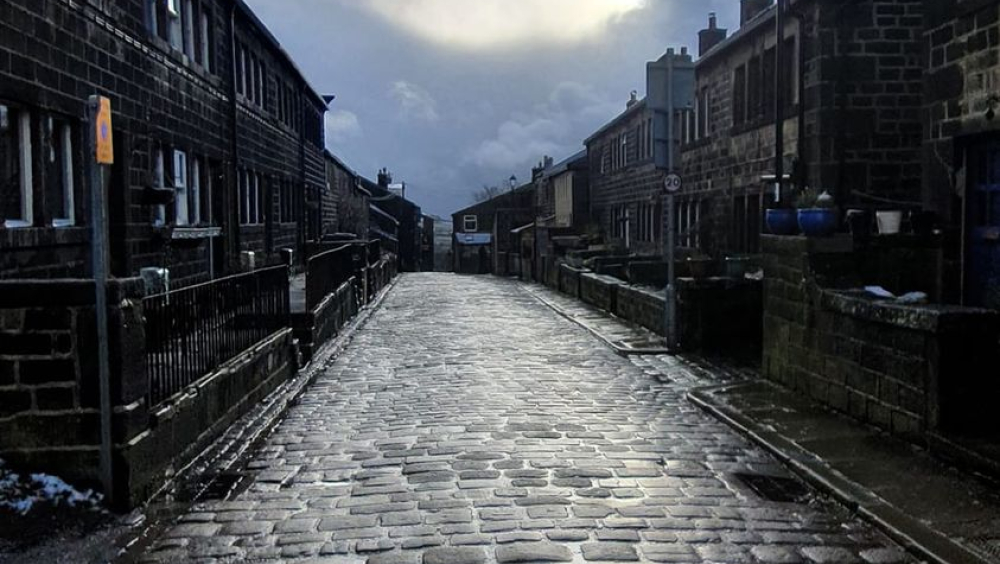The House That Ethel Built
Pays
United Kingdom - England
Organization name
Heptonstall Museum
Storyteller
Michael
E-Mail: michaelcrowley1@hotmail.co.uk
Vue d'ensemble
Our project is to produce a play about the life of a former Heptonstall resident, Ethel Carnie Holdsworth (1886–1962). Ethel is credited with being the first working-class female novelist in the English language. Born into a weaving family in Lancashire she began working in a mill half-time at eleven years old, full-time from the age of thirteen. Receiving little formal education, Ethel was largely self-taught through borrowing books. Her first book of poems, Rhymes from the Factory, was published in 1907, securing her a post in journalism for The Woman Worker. Ethel wrote children’s stories before completing ten novels, one of which, Helen of Four Gates, was made into a feature film in 1920. Her novels drew on her experiences of factory life, in particular, the hardships that women faced. They are a unique insight into an otherwise unrecorded world, capturing the social and political change she observed in an important body of work published from 1907 to the 1930s.
Before the outbreak of WW1 Ethel travelled in Germany and campaigned against conscription in Britain on her return. Throughout her career, she put the case for improved conditions for mill workers and for easier access to divorce for women. In the 1920s, Ethel lived in Heptonstall, during which time she wrote her most successful novels. She also edited and produced the first English language anti-fascist journal The Clear Light, as well as publishing a series of sonnets in the journal Freedom, protesting at the imprisonment of political prisoners in Soviet jails. With the outbreak of the Second World War, her mental health declined, and she died in obscurity. Ethel was a trailblazer for working-class women writers. The play about her life will be entitled The House That Ethel Built, and it will accompany an exhibition at Heptonstall Museum.
The story of Heptonstall Museum is key to celebrating the story of Ethel Carnie Holdsworth. Heptonstall is an ancient village above the town of Hebden Bridge in West Yorkshire. Its earliest appearance in written record dates to 1253, the Museum building dates from the sixteenth century. For most of its life, it was a grammar school, becoming a museum in the 1970s. During COVID, Calderdale Council decided to close the Museum permanently. In 2020 Friends of Heptonstall Museum was formed with a view to taking on management of the Museum. We became a registered charity and successfully submitted a business plan in 2022. We will reopen in May 2023.
The stage play, The House That Ethel Built, will be performed during Heritage Open Week in September 2023. The production will foreshadow an exhibition in the Museum about Ethel’s life and work as well as raise funds. There will be two performances of the play in the village, both in the Museum, before it travels to schools and other venues. The play’s writer and director Michael Crowley is also a board member of Heptonstall Museum. Michael has written drama for BBC Radio and Sky Arts; his last play Waiting for Wesley premiered at the Museum summer 2022. The timing of the production is deliberate because there has recently been a revival of interest in Ethel’s work of late, with publishers re-issuing her novels, many of which were out of print.
The narrative of the play begins with Ethel’s marriage to Alfred Holdsworth in 1915. Both he and Ethel lead an anti-conscription campaign in Nelson, Lancashire, and a specific public meeting of November 1915 is dramatised. Soldiers rush the stage in an attempt to break up the meeting, but Ethel stands her ground, with the meeting continuing and eventually voting against the introduction of conscription. Conscription was introduced in 1916, and we see Alfred’s decision to join the war effort and Ethel’s anger and dejection. A few months later Ethel receives a telegram to say Alfred has been killed.
Another key relationship in the play is with her publisher, Herbert Jenkins. Herbert falls in love with Ethel, and with Alfred gone, he asks her to join him in London. She refuses, partly because, with the success of her first novel, she is able to live independently. When her second novel Helen of Four Gates, is also a success, Herbert offers her a six-book deal. There is though tension between writer and publisher. Herbert wants to increase the price of Ethel’s novel, whereas Ethel wants the price reduced so that, the people whom the novels were about, workers on low wages, can afford to buy them. Ethel said in 1920 that the most difficult task, “is to teach people to want something better, to sting them into rebellion against poverty, to fire their hearts with a cause”. To that end her fiction has a campaigning style in places which Jenkins believes narrows the market and he is sceptical about what becomes one of her most important novels, This Slavery.
Unexpectedly Alfred returns from Germany having been in a prisoner of war camp. He is physically and psychologically scarred and begins to physically abuse Ethel. Despite advice from her doctor, Ethel refuses to leave Alfred and cares for him until it is no longer possible.
The play has two major themes. First is the failure of Ethel’s idealism. Ethel is a pacifist, yet she is surrounded by violence. Her husband is forced to join the war effort; the suffragettes engage in physical force, and the Russian Revolution results in civil war. In response to the Red Army’s attack on the Kronstadt naval base and subsequent incarceration of sailors, Ethel campaigned alongside Russian exile Emma Goldman for their release from the Solovetsky gulag. She abandons her belief that socialism can only be established by revolution and instead joins the Labour Party. She accepts progress must be made through reform.
The second major theme is how steadfast Ethel was in sticking to her principles. Although she did write some light fiction, she also wrote more politicised narratives that risked the commercial success she had secured. Ethel decided to switch to the Labour Publishing Company (LPC) for the publication of This Slavery in 1925 because her existing publisher wanted to sell the book at seven shillings and sixpence, and the LPC agreed a price of two shillings and sixpence, the average weekly wage of a coal miner in 1925 being 16 shillings. When Ethel began her journalism for The Woman Worker, she was told to leave after a matter of months because she campaigned for equality for women on all terms. She criticised the suffragettes for only demanding a limited extension of the franchise that didn’t include working class women. Ethel returned to Lancashire to work in a mill and remarked that she would rather work in factory than write articles that she didn’t agree with.
The play’s title The House That Ethel Built draws from Ethel’s 1920 novel, The House That Jill Built. The novel’s narrative is driven by the main character, Jill Bennett, who at eighteen, finds out that she has inherited £10,000. Jill decides to set up a rest home for working-class women in the countryside where she could offer tired mothers a month away from their husbands and children, a place where they could eat good food, socialise with the other women and recuperate. The novel feels allegorical to Ethel’s vocation: someone who has dedicated their gift to supporting working mothers. The audience will hear Ethel gradually build the plot of the novel to herself as we progress through the narrative of her own life. The House That Ethel Built will have a cast of three, with the two male actors playing more than one character. There will be after-show discussions, particularly in schools where we intend to run associated writing and drama workshops. All productions will have opportunities for interns.
European Dimension
For someone who was an ordinary textile worker from Lancashire in the early twentieth century, Ethel Carnie Holdsworth developed a remarkable interest in European politics and culture. She taught herself the history of Ancient Greece and the French Revolution. She kept abreast of political events on the continent and was influenced by the writings of the Spanish educationalist Francisco Ferrer, which possibly led to collaborate with the Russian émigré Emma Goldman. She followed events in Russia, was initially excited by the Russian Revolution but was quickly disillusioned by the violence it bred. Most of all she was horrified by the First World War and debilitated by the Second.
European history in the last two centuries has been a struggle for democracy, peace and security against the dangers of political extremism and war. Ethel Carnie’s personal quest mirrors this. She rejected and campaigned against political violence as well as social and gender inequality and warned against the rise of fascism. She did so, largely as a journalist, poet and novelist. Her concern was for humanity more-so than her country.
Heptonstall Museum’s vision statement is: ‘At the heart of a village at the heart of a planet.’ Hebden Bridge Twinning Society (HBTS) promotes and develops social and cultural links between the town and its surrounding areas with communities in other countries. Hebden is twinned with St Pol sur Ternoise in France, Warstein in Germany. They have links with Blatna in the Czech Republic, Pietrapaula in Calabria, Italy and Golega in Portugal. HBTS have agreed to promote The House That Ethel Built to their European partners; hopefully, they will create their own production or invite us to perform there. And the story of Ethel’s life and work will be shared further.

